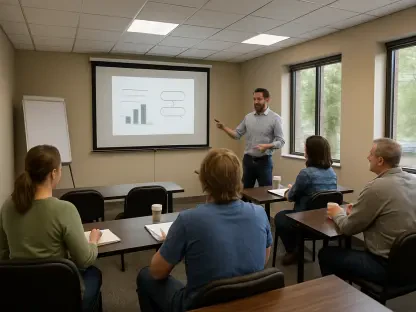In a state renowned for its innovation and academic excellence, California’s public higher education systems are facing an alarming crisis of crumbling infrastructure and severe student housing shortages, prompting a bold legislative response with the proposed College Health and Safety Bond Act of 2026 (AB 48). Introduced by Assemblymember David Alvarez (D-San Diego), this measure seeks to secure billions of dollars to fund urgent repairs, seismic safety upgrades, and affordable housing projects across the University of California (UC), California State University (Cal State), and California Community Colleges (CCC). With a staggering $17 billion maintenance backlog looming over these institutions, coupled with widespread housing insecurity among students, the urgency for action has never been clearer. The bond’s potential placement on the November 2026 ballot comes shortly after voters approved Proposition 2 in 2024, allocating $10 billion for K-12 and community college facilities. This raises a critical question: will Californians rally behind another significant investment in education so soon? The outcome could shape not only the physical landscape of campuses but also the accessibility and safety of higher education for future generations. Addressing these challenges is essential to maintaining the state’s competitive edge in producing a skilled workforce, making this proposal a pivotal moment for public policy and student welfare.
Crumbling Campuses in Crisis
The state of campus infrastructure across California’s public colleges and universities paints a dire picture of neglect and deferred maintenance that can no longer be ignored. A comprehensive report from the Legislative Analyst’s Office highlights a staggering $17 billion backlog in maintenance needs affecting UC, Cal State, and CCC systems. Many of these buildings, constructed before 1970, are plagued by outdated electrical systems, leaking roofs, and temperature control failures that compromise the learning environment. The scale of the problem is immense, with UC and Cal State each requiring approximately $9 billion in repairs, while CCC faces a need of $2.2 billion over the coming years. These figures underscore a systemic issue that threatens not just the functionality of academic spaces but also the safety of those who use them daily. Without significant investment, the risk of further deterioration looms large, potentially disrupting education and research activities critical to the state’s future.
Beyond the raw numbers, real-world examples bring the severity of these infrastructure challenges into sharp focus. At Cal State Long Beach, Peterson Hall 1 stands as a stark reminder of outdated facilities, failing to meet current earthquake safety standards and posing a direct risk to occupants. Similarly, Sacramento State’s Santa Clara Hall, built in the 1960s, has long surpassed its intended lifespan, with failing systems that hinder its usability. Over at UC Davis, the 86-year-old Hickey Gymnasium struggles with pest infestations and heat issues severe enough to disrupt ongoing research efforts. These cases are not anomalies but symptoms of a broader crisis affecting countless facilities across the state. The proposed bond aims to tackle these pressing issues head-on, prioritizing repairs that could restore safety and functionality to campuses that have been neglected for far too long.
Earthquake Vulnerabilities Demand Action
Seismic safety remains a paramount concern in a state like California, where the threat of earthquakes is an ever-present reality for educational institutions. A significant portion of campus buildings—30% at UC and Cal State, and 20% at CCC—were erected before modern seismic standards were established, leaving thousands of students, faculty, and staff vulnerable to catastrophic failure during a major quake. This vulnerability is not merely theoretical; it represents a tangible risk that could result in loss of life and widespread damage if not addressed promptly. The proposed 2026 bond places a high priority on retrofitting and rebuilding these structures to meet current safety codes, aiming to transform campuses into secure environments where learning can occur without the looming fear of structural collapse. Addressing these deficiencies is a critical step toward safeguarding the higher education community.
Specific campus situations highlight the urgency of seismic upgrades and the transformative potential of the bond’s funding. At UC Berkeley, critical departments such as mathematics and economics are currently housed in buildings deemed seismically unfit, creating daily risks for those who work and study within them. Plans to relocate these departments into a newly constructed, earthquake-safe academic building demonstrate the kind of proactive measures that bond funding could enable. This is not just about mitigating danger but also about ensuring continuity of education and research during and after seismic events. By focusing on such upgrades, the bond seeks to protect the physical infrastructure of California’s colleges while preserving their role as centers of intellectual and cultural development. The stakes are high, and the need for action is immediate to prevent potential disasters.
Housing Shortages Threaten Student Success
Amid the infrastructure decay, an equally pressing issue confronts California’s college students: a severe shortage of affordable housing that jeopardizes their ability to focus on education. According to a 2023 survey by the California Student Aid Commission, independent students spend an average of $1,400 to $1,520 per month on housing, a burden that over half of respondents report as a source of insecurity. Compounding this, a 2020 UCLA study revealed alarming rates of homelessness among students, affecting 1 in 5 at CCC, 1 in 10 at Cal State, and 1 in 20 at UC. These statistics reflect a crisis that extends beyond mere inconvenience, striking at the heart of educational access and equity. The high cost of living in California exacerbates the problem, making it difficult for many to afford both rent and tuition without significant financial strain. The 2026 bond proposes to fund new housing projects, marking a significant shift in state policy to directly address this barrier to student success.
The disparity in housing costs across different campus locations further illustrates the depth of this challenge and the need for targeted solutions. Off-campus rents for a two-bedroom apartment vary widely, from a relatively manageable $1,465 near UC Merced to an exorbitant $4,297 near UC Santa Cruz. Similarly, costs range from $1,807 near Cal State Bakersfield to $3,014 near San Francisco State, reflecting the diverse economic pressures students face depending on where they study. Historically, state funding focused solely on academic facilities, leaving housing to be financed through university fees and rents. The inclusion of housing in the proposed bond signals a recognition that safe, affordable living spaces are as crucial to education as classrooms and labs. By alleviating these financial pressures, the bond could enable more students to complete their degrees without the added stress of housing instability, fostering a more inclusive academic environment.
Shifting Funding Strategies for Higher Education
Funding for higher education infrastructure in California has undergone significant changes over the years, reflecting evolving priorities and fiscal constraints that shape current policy debates. Traditionally, state budgets covered the costs of academic buildings, while universities relied on student fees to finance self-supported facilities such as dormitories. Since 2013-2014, UC and Cal State have been granted the authority to issue revenue bonds, using tuition and housing rents to service debt for non-academic projects. However, academic facilities, which generate no direct revenue, remain dependent on increasingly strained state allocations. This funding model has left many critical maintenance needs unaddressed, as budget shortfalls limit the resources available for essential repairs. The proposed 2026 bond represents an attempt to bridge this gap by encompassing both academic and housing needs under a single, voter-approved funding mechanism.
Recent history reveals additional complexities in addressing these funding challenges, particularly with regard to student housing. In 2021, the state committed $2 billion over three years to support housing projects across public colleges, a promising step toward alleviating student burdens. However, this allocation was rescinded in 2023 by Governor Gavin Newsom to manage a budget deficit, stalling numerous planned developments and leaving students and administrators in limbo. The decision underscored the vulnerability of education funding to broader economic pressures and highlighted the need for a more stable, long-term solution. AB 48’s approach to combine funding for infrastructure repairs and housing into one bond measure marks a departure from past practices, prompting discussions about how best to prioritize competing needs within limited resources. This shift could redefine how the state supports its higher education systems moving forward.
Navigating Voter and Political Dynamics
As the 2026 bond proposal moves toward a potential ballot placement, understanding voter sentiment and political dynamics is crucial to assessing its chances of success. Californians have historically shown strong support for higher education funding, approving 10 out of 12 bond measures between 1986 and 2016. The passage of Proposition 2 in 2024, which provided $10 billion for K-12 and community college infrastructure, further suggests a willingness to invest in educational facilities despite fiscal concerns. However, opposition from groups such as the Howard Jarvis Taxpayers Association introduces a significant counterpoint, emphasizing the long-term debt burden that bonds place on taxpayers. These critics argue that such measures may fund projects with limited lasting value, creating a tension between immediate needs and future financial responsibilities that will likely influence public discourse as the vote approaches.
Support for increased education funding, particularly for UC, appears robust based on recent data, though challenges remain in swaying a broad electorate. A 2025 poll conducted by UC Berkeley found that 58% of registered California voters favor boosting state support for the UC system, indicating a potential base of support for the upcoming bond. Advocates, including student leaders from across the three systems, argue that modern facilities and affordable housing are fundamental to ensuring equitable access to education. Assemblymember Alvarez has framed the bond as vital to maintaining California’s global competitiveness, a perspective echoed by university administrators who see safe campuses as non-negotiable. Yet, balancing this enthusiasm with concerns over cost and fiscal prudence will be key. As debates intensify leading up to 2026, the ability to clearly communicate the tangible benefits of this investment to voters could determine whether the bond secures the necessary approval to address these critical needs.
Building a Safer Future for Education
Reflecting on the journey that led to the proposal of AB 48, it’s evident that California’s public higher education systems have been wrestling with deteriorating infrastructure and housing shortages for years before this pivotal moment. The $17 billion maintenance backlog has grown steadily, with aging buildings becoming safety hazards due to outdated systems and seismic vulnerabilities. Stories of students grappling with homelessness and unaffordable rents have become all too common, underscoring a crisis that demands action. The passage of Proposition 2 in 2024 marked a partial victory for community colleges, but left UC and Cal State systems searching for solutions to their own pressing needs. It was within this context of urgency and unresolved challenges that lawmakers crafted a comprehensive bond measure aimed at tackling both physical decay and student welfare in a unified approach.
Looking ahead, the path to securing voter approval for the 2026 bond offers a chance to fundamentally transform California’s higher education landscape if successful. Stakeholders must focus on transparent communication, detailing how funds will be allocated to ensure maximum impact on campus safety and student housing. Engaging communities through town halls and campus forums could help build a groundswell of support, emphasizing real stories of students and faculty affected by current conditions. Lawmakers should also consider contingency plans to address opposition concerns, perhaps by outlining strict oversight mechanisms to guarantee fiscal responsibility. Ultimately, the success of this initiative hinges on presenting a compelling case that safe, modern facilities are not a luxury, but a necessity for fostering the next generation of leaders and innovators in the state.








